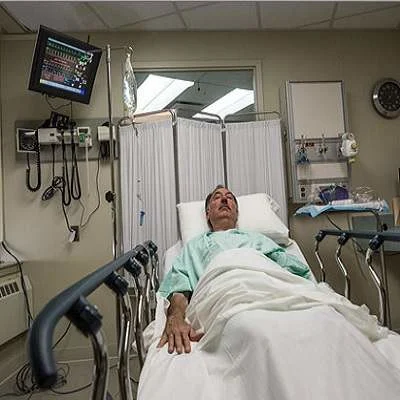A Canadian study published online in JAMA Neurology reveals that patients who had a stroke while hospitalised for another reason waited longer before being diagnosed and receiving treatment, compared with those who had strokes before entering the hospital.
Researchers also found that patients with in-hospital stroke were more likely to have a comorbid illness, experience a more severe stroke, have a greater disability and stay in the hospital longer. They noted that there was no difference between the groups in mortality at 30 days or one year after strokes.
Based on their findings, lead researcher Alexandra P. Saltman, MD, of the Department of Medicine at the University of Toronto in Canada, and colleagues recommended establishing an algorithm and protocol for diagnosing and treating patients with in-hospital stroke.
According to the research team, “These results add to the growing body of evidence in favour of the development of a standardised approach to the recognition and management of in-hospital stroke.” In particular, the researchers call for the development of targeted code stroke protocols for the in-hospital stroke population, similar to those used in the emergency department.
Dr. Saltman and her team examined the Ontario Stroke Registry, which included patients with stroke or transient ischaemic attack seen in the emergency department or at 11 regional stroke centres in Ontario from 1 July 2003 to the present. For this study, they included adult patients (18 years or older) with acute stroke or diagnosed with in-hospital stroke between 1 July 2003 and 31 March 2012. Patients with transient ischaemic attack were excluded.
Overall, the study sample included 973 patients with in-hospital stroke and 28,837 with community-onset stroke. In-hospital stroke patients were more likely to be older than 65 and to have diabetes, hypertension, atrial fibrillation or hyperlipidaemia. Key findings included:
The research team said the registry did not include reasons for delays in diagnosis or treatment, specific surgical and medical diagnoses, as well as long-term functional status or quality of life measurements following strokes.
Image Credit: Michigan State University
Researchers also found that patients with in-hospital stroke were more likely to have a comorbid illness, experience a more severe stroke, have a greater disability and stay in the hospital longer. They noted that there was no difference between the groups in mortality at 30 days or one year after strokes.
Based on their findings, lead researcher Alexandra P. Saltman, MD, of the Department of Medicine at the University of Toronto in Canada, and colleagues recommended establishing an algorithm and protocol for diagnosing and treating patients with in-hospital stroke.
According to the research team, “These results add to the growing body of evidence in favour of the development of a standardised approach to the recognition and management of in-hospital stroke.” In particular, the researchers call for the development of targeted code stroke protocols for the in-hospital stroke population, similar to those used in the emergency department.
Dr. Saltman and her team examined the Ontario Stroke Registry, which included patients with stroke or transient ischaemic attack seen in the emergency department or at 11 regional stroke centres in Ontario from 1 July 2003 to the present. For this study, they included adult patients (18 years or older) with acute stroke or diagnosed with in-hospital stroke between 1 July 2003 and 31 March 2012. Patients with transient ischaemic attack were excluded.
Overall, the study sample included 973 patients with in-hospital stroke and 28,837 with community-onset stroke. In-hospital stroke patients were more likely to be older than 65 and to have diabetes, hypertension, atrial fibrillation or hyperlipidaemia. Key findings included:
- Median time from symptom recognition to neuroimaging: 4.5 hours (in-hospital stroke group) vs. 1.2 hours (community-onset stroke group);
- Within two hours of symptom recognition, 32 percent of the in-hospital stroke group and 63 percent of the community-onset stroke group had undergone brain imaging;
- Within 90 minutes of stroke diagnosis, 29 percent of the in-hospital stroke group and 72 percent of the community-onset stroke group had received thrombolysis.
The research team said the registry did not include reasons for delays in diagnosis or treatment, specific surgical and medical diagnoses, as well as long-term functional status or quality of life measurements following strokes.
Image Credit: Michigan State University
References:
Saltman AP et al. (2015) Care and Outcomes of Patients With In-Hospital Stroke. JAMA Neurol. doi:10.1001/jamaneurol.2015.0284
Latest Articles
healthmanagement, stroke, in-hospital stroke, algorithm, protocol, thrombolysis
Patients who had a stroke while hospitalised for another reason waited longer before being diagnosed and receiving treatment, compared with those who had strokes before entering the hospital.

![Tuberculosis Diagnostics: The Promise of [18F]FDT PET Imaging Tuberculosis Diagnostics: The Promise of [18F]FDT PET Imaging](https://res.cloudinary.com/healthmanagement-org/image/upload/c_thumb,f_auto,fl_lossy,h_184,q_90,w_500/v1721132076/cw/00127782_cw_image_wi_88cc5f34b1423cec414436d2748b40ce.webp)






